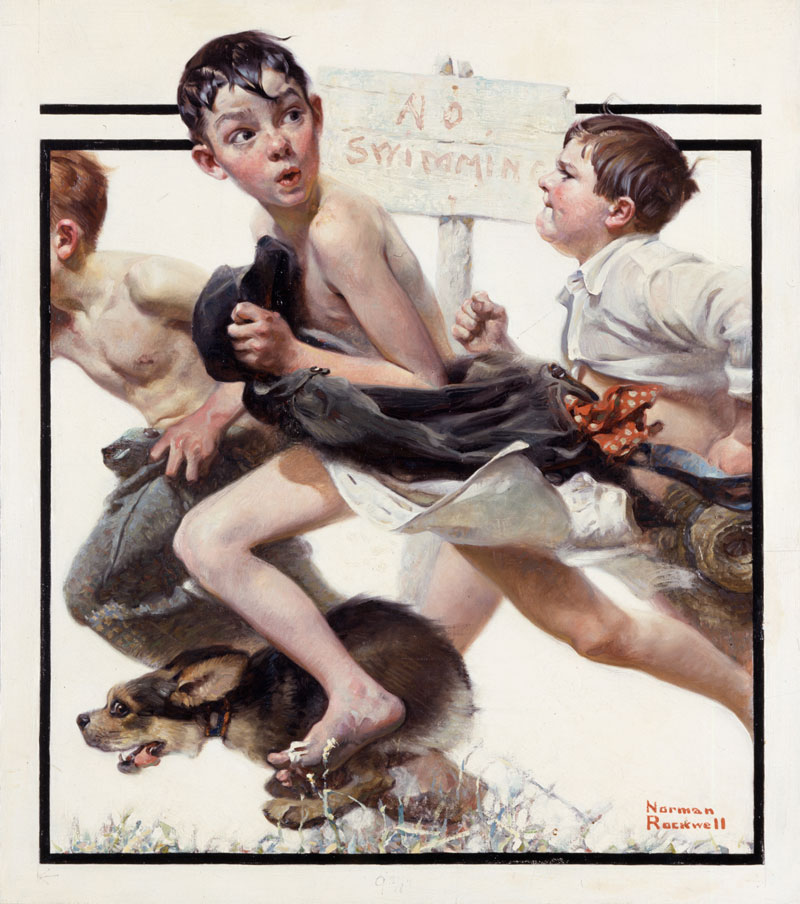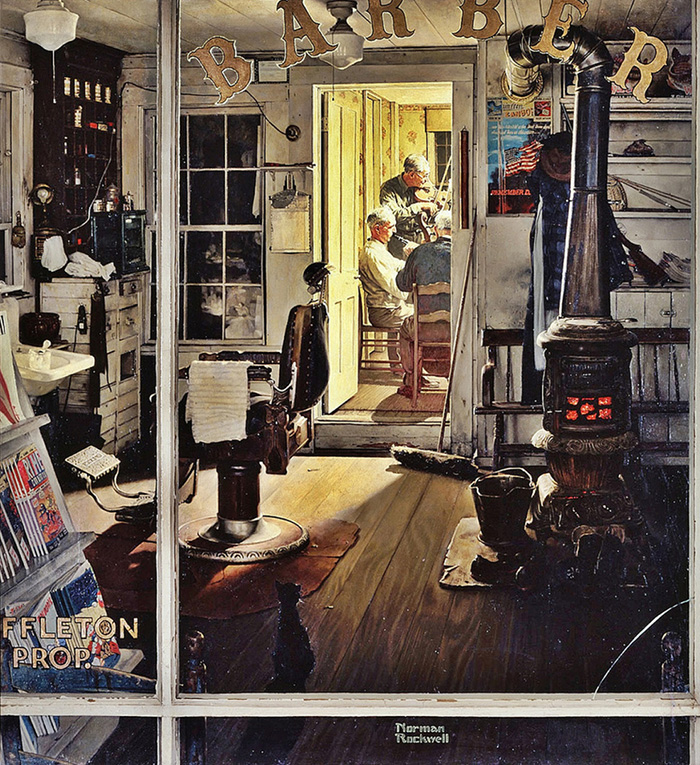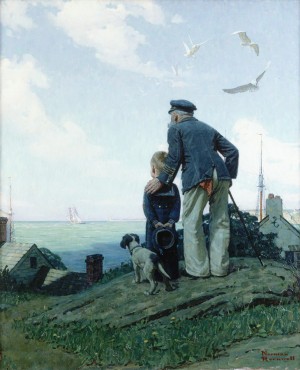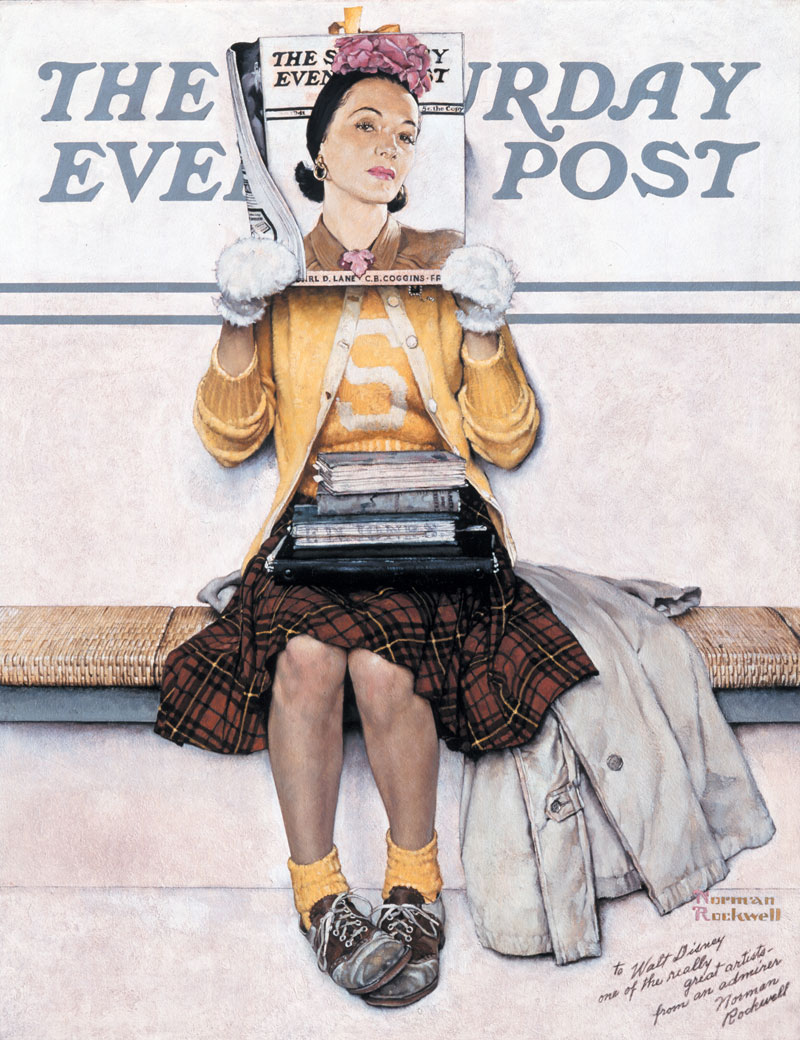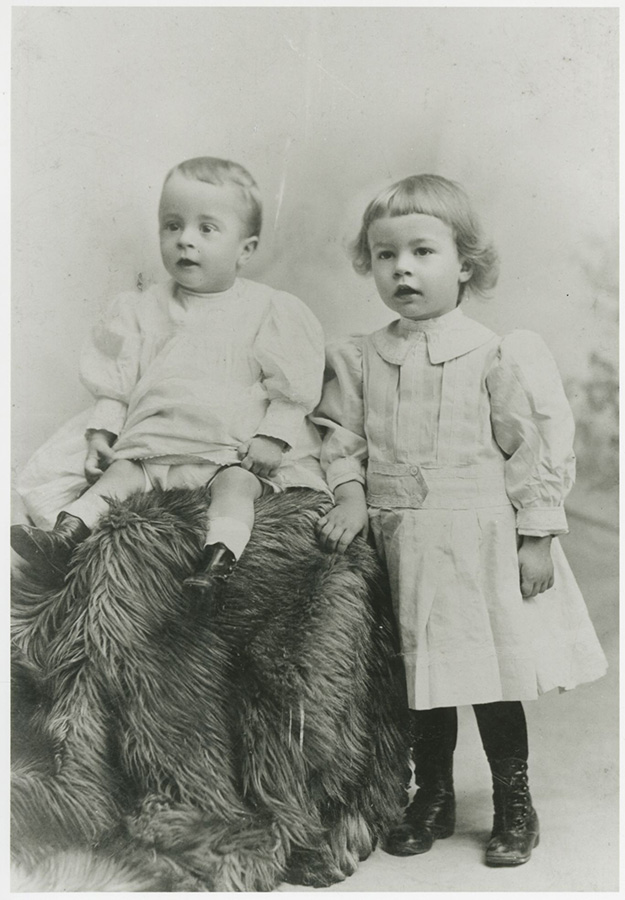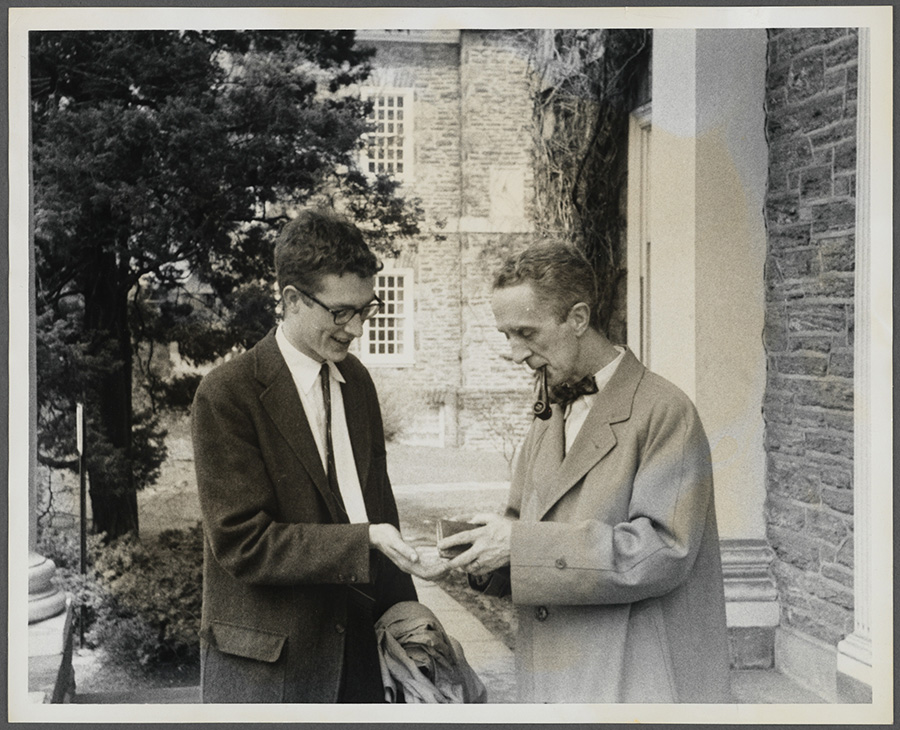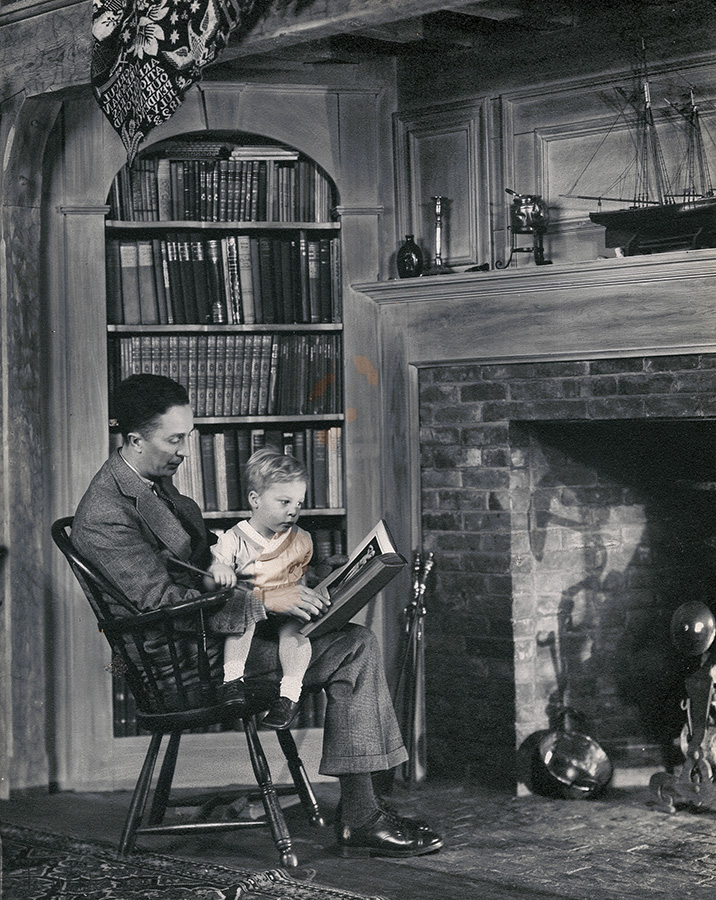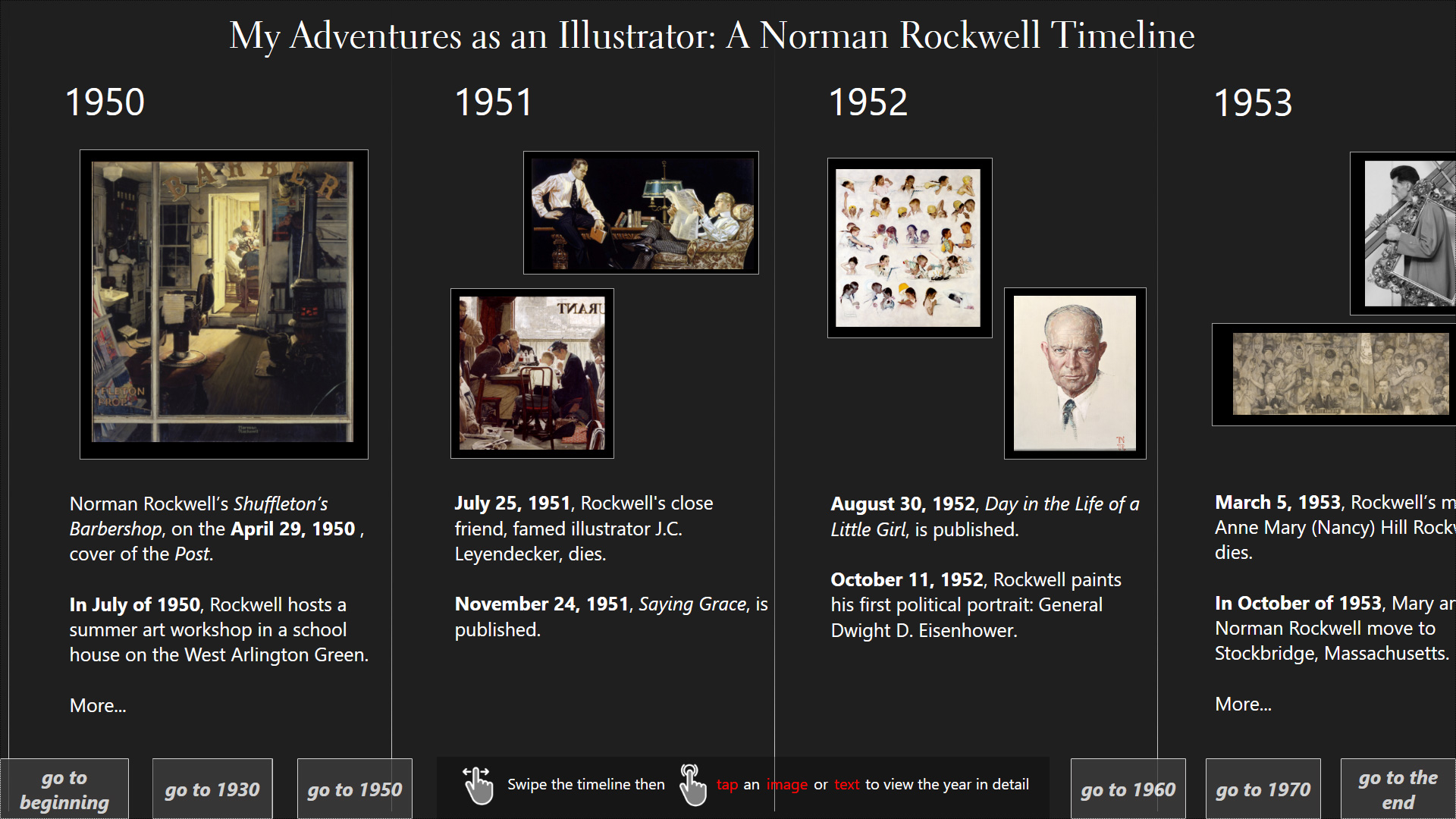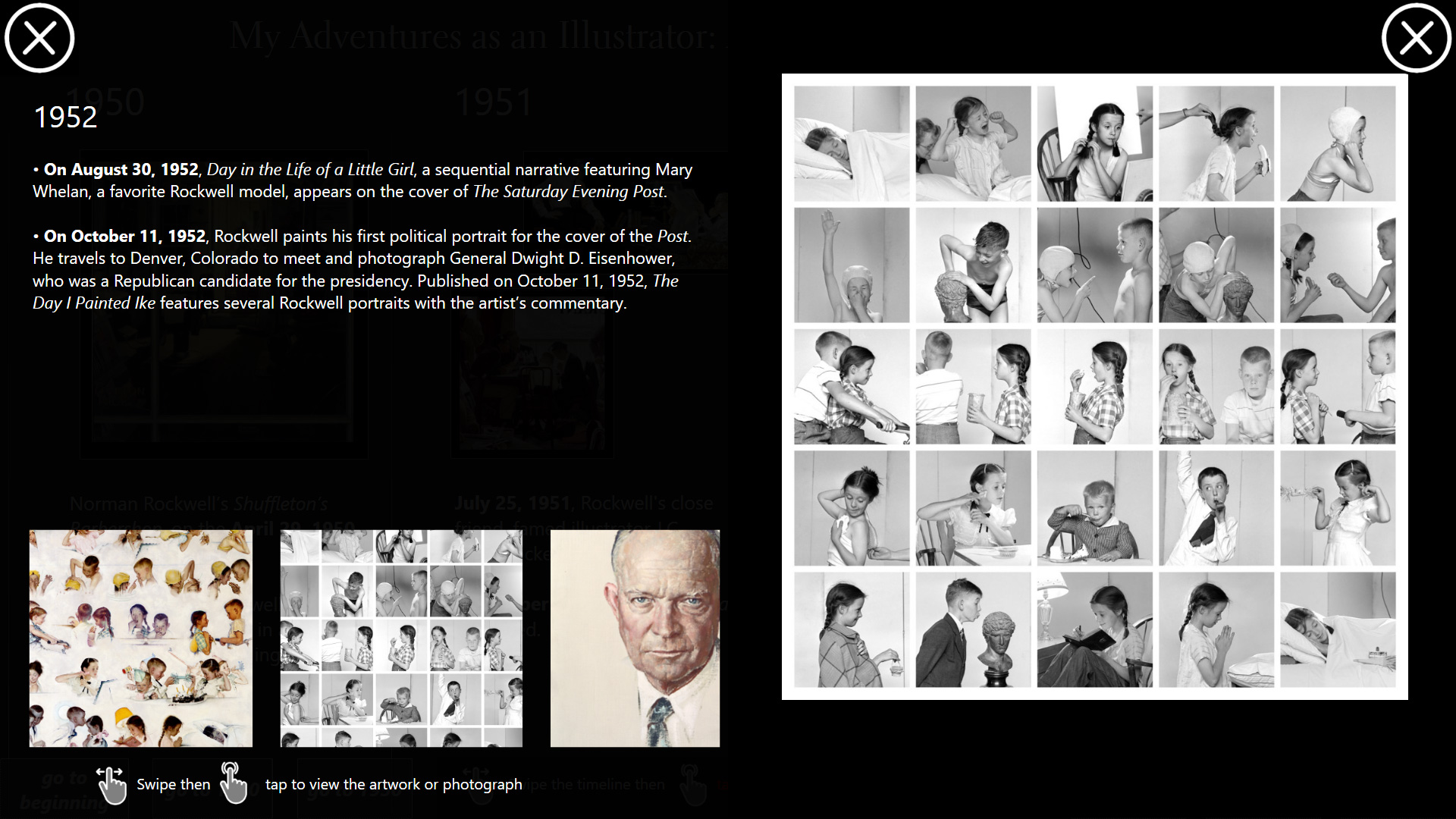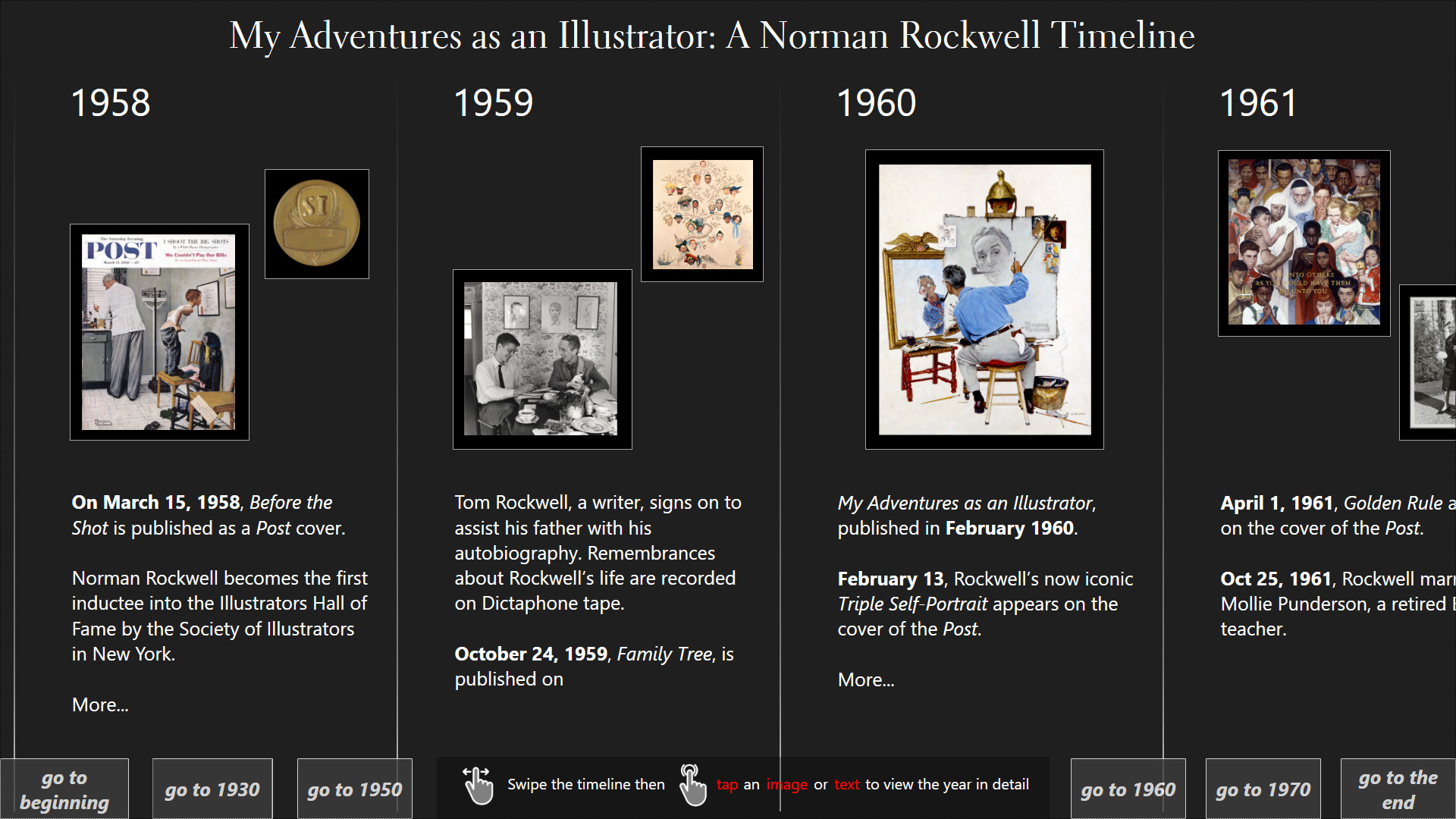Norman Rockwell: Private Moments for the Masses
June 8 through October 27, 2019
This special 50th Anniversary exhibition offers a behind-the-scenes look at the autobiographical aspects of Rockwell’s art through beloved imagery that conveyed, in both subtle and direct ways, his own interests, anxieties, and real-life experiences.
An astute visual storyteller and a masterful painter with a distinct, personal message to convey, Norman Rockwell created fictional realities that offered a compelling picture of the life that many Americans aspired to. His carefully-constructed artworks for the covers and pages of popular publications engaged an appreciative audience for decades—but few would have imagined all that his art revealed about the inner workings of his personal and professional life.
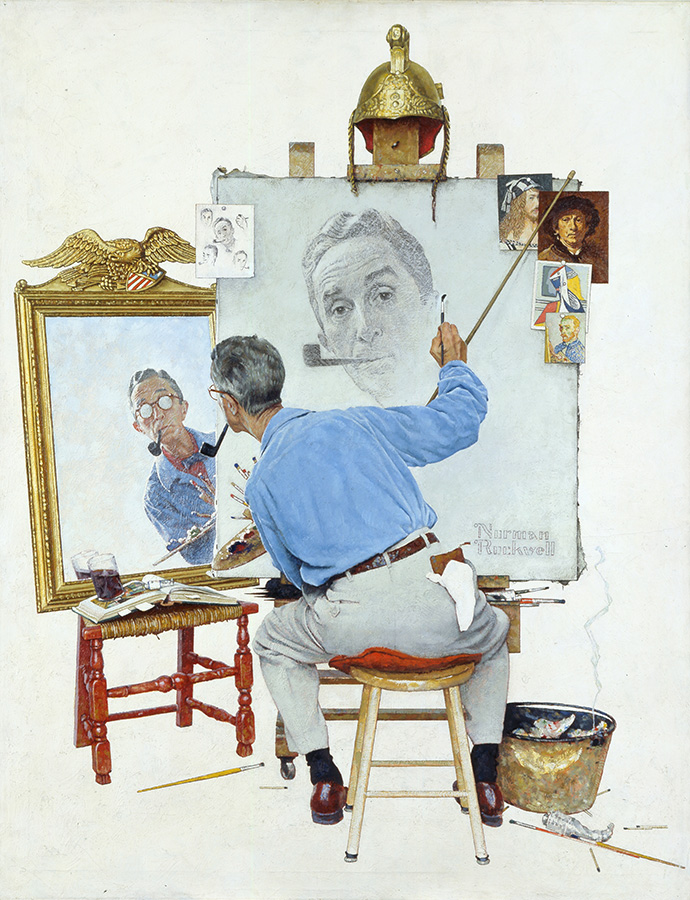
Norman Rockwell (1894-1978). Triple-Self Portrait, 1960. Cover illustration for The Saturday Evening Post, February 13, 1960. Norman Rockwell Museum Collections. ©1960 SEPS: Licensed by Curtis Publishing, Indianapolis, IN
Rockwell’s reality made unwitting appearances in his imagery throughout his prolific career—recalling the gleeful pranks of childhood, his art school and fledgling professional years, and the joys and challenges of being a husband and father. For Rockwell, a strong visual story concept was “the first thing and the last thing,” and almost any subject could serve as inspiration for his highly visible art. As noted by Rockwell’s eldest son, Jarvis, his family felt that they were “living out the cover of a Saturday Evening Post,” perhaps no surprise, as perceived authenticity was a mark of success for the artist.
Works spanning Rockwell’s career will be featured, including The Stay at Homes (Outward Bound), a poignant illustration created for the October 1927 issue of Ladies’ Home Journal. In 1903, when Rockwell was nine, his paternal grandmother, Phebe Rockwell, died. To ensure that his grandfather would not be alone, the Rockwell family moved from their 103rd Street apartment in New York to St. Nicholas Avenue and 152nd Street, where John Rockwell resided. They remained together even after a 1907 move to Mamaroneck, New York—until 1911, when Rockwell’s mother, burdened by the hardship of caring for her father-in-law, prompted a move to a New Rochelle boarding house. Though Rockwell’s grandfather may not specifically appear as a model in his many pictures of elderly men, the tender grandfather-grandchild relationship is abundant in his work.
Friends and family are prominent in such work as his 1948 Christmas Homecoming, a joyous scene that captures the entire Rockwell clan in a moment of reverie. Youngest son Peter (with eyeglasses) looks on from the left corner; middle son Tom, in a plaid shirt, is all smiles; and wife Mary heartily hugs the couple’s oldest son, Jarvis, who has just arrived home from art school. The artist himself, seen with his signature pipe, looks on with pride, as do fellow artists Grandma Moses and Post illustrator, Mead Schaeffer and his family, who lived within close proximity during his Arlington, Vermont years.
Rockwell’s 1960 Triple Self-Portrait, a hallmark of the exhibition, considers the artist’s identity at a time when the term “identity crisis”—coined by Rockwell’s own therapist, Erik Erikson―entered the lexicon of the day. In this work, Rockwell acknowledges his role as an illustrator while affirming his debt to fine artists. Though distained by the midcentury art world, Rockwell was revered by his illustration peers and remained in the public eye for half a century. Humor and humility were essential aspects of his character, so when asked to do a self-portrait announcing the first of eight excerpts from My Adventures as an Illustrator, his autobiography, he created a self-deprecating Post cover offering a lighthearted look at both the inner and outer man.
Many Rockwell favorites will be on view, including No Swimming (1921), The Runaway (1958), and other iconic paintings and drawings, as well as rarely-seen early works, candid photographs, personal affects and correspondence, and personal date book diaries. We look forward to sharing this biographical exhibition with you―it also highlights the exciting re-release of Rockwell’s autobiography, My Adventures as an Illustrator, first published in 1960 and re-released by Abbeville Press.
ABOUT THE ARTIST
Born in New York City, Norman Rockwell always wanted to be an artist. At age 14, Rockwell enrolled in art classes at The New York School of Art (formerly The Chase School of Art). Two years later, in 1910, he left high school to study art at The National Academy of Design. He soon transferred to The Art Students League, where he studied with Thomas Fogarty and George Bridgman. Fogarty’s instruction in illustration prepared Rockwell for his first commercial commissions. From Bridgman, Rockwell learned the technical skills on which he relied throughout his long career.
Rockwell found success early. He painted his first commission of four Christmas cards before his sixteenth birthday. While still in his teens, he was hired as art director of Boys’ Life, the official publication of the Boy Scouts of America, and began a successful freelance career illustrating a variety of young people’s publications.
IMAGES
RELATED EVENTS
MEDIA
The Daily Gazette July 11, 2019 On Exhibit: Rockwell Museum focuses on founding artist
WAMC June 11, 2019 50 Years Of Illustration At Norman Rockwell Museum
The Berkshire Eagle May 31, 2019 Erikson and Rockwell: How their friendship helped shape the art
VENUE(S)
Norman Rockwell Museum, Stockbridge, MA June 8 through October 27, 2019
RELATED PRODUCTS
There are currently no related products for this exhibition, check back soon!


